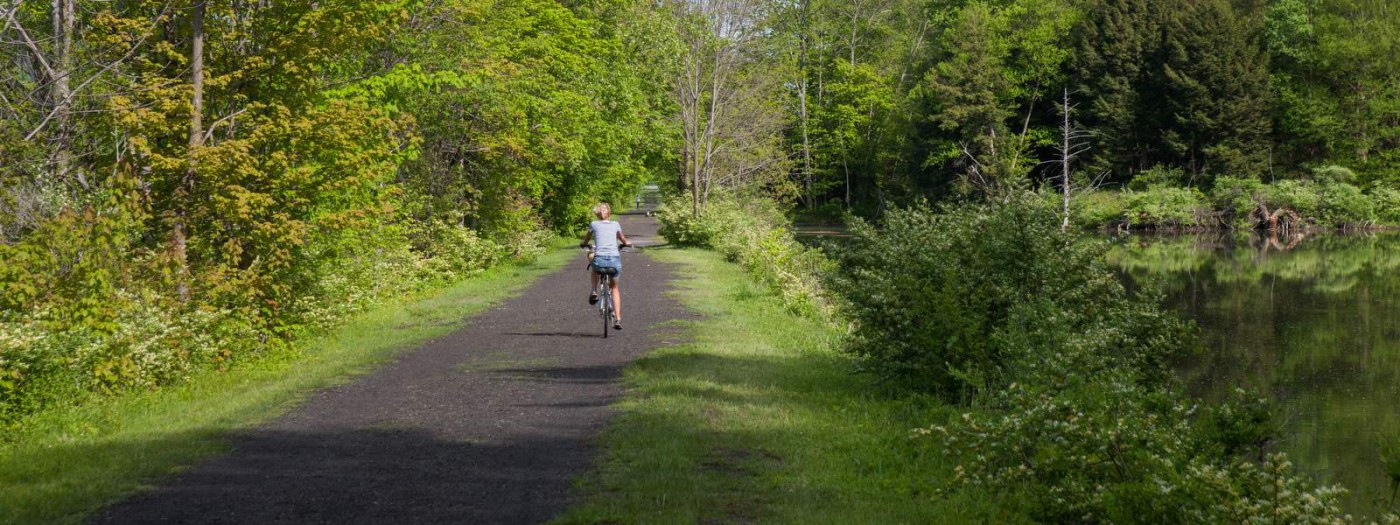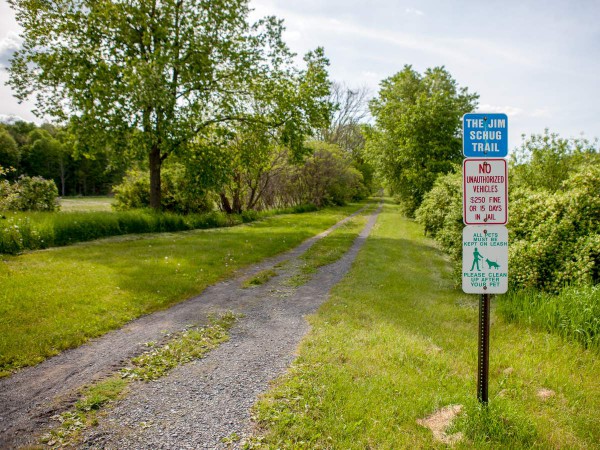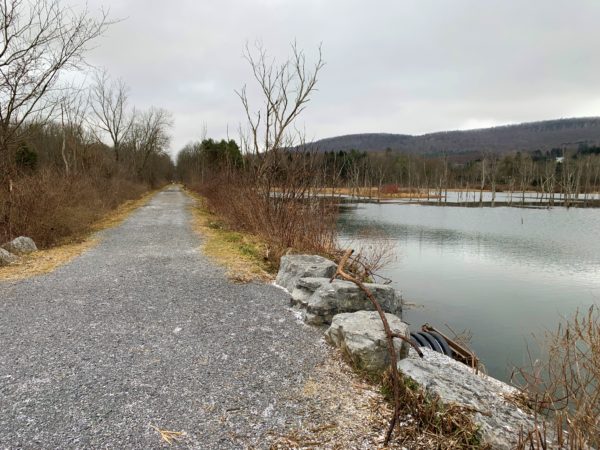The Jim Schug Trail is an excellent example of repurposing abandoned rail lines into multiuse trails. Hikers, cyclists, runners, and equestrians all share the broad and flat trail in summer while snowshoers and cross-country skiers take over in the winter. The majority of the trail is flanked by swamps, wetlands, and ponds with the more remote and wild portions bordering Dryden Lake Park to the north and south. Currently 4.2 miles long, there are plans to extend the trail another 3.3 miles. Let’s hope the future expansions are as impressive as the first. Other rails-to-trails successes include the Keuka Outlet Trail, Catharine Valley Trail, and Black Diamond Trail.
Originally known as the Dryden Lake Trail, it was later renamed in honor of the highway superintendent who strongly advocated for its creation. The trail weaves its way from Main Street in Dryden through Dryden Lake Park and ends at the intersection with the Finger Lakes Trail on East Lake Road.
The trailhead in Dryden is not immediately obvious, despite a handsome sign and kiosk, because the old railroad bed has been overgrown by lawn. But the right of way exists and is visible as a flat-topped mound that extends into a tree-lined alley a short distance ahead. The route becomes clearer the further south you go and progresses from suburban to wild to park to wild again.
Past the intersection with Rte. 38, the old rail bed is flanked on either side by wetlands. Cyclists will appreciate the obstruction-free path allowing them to coast along the flat terrain taking in the sights and excellent birding. But keep an eye out for the slow crossing turtles and an abundance of amphibians that wander across the stone dust path. Walkers, at their slower pace, will have greater opportunities to see wildlife in the swamps and marshes. Benches are located every half-mile along the trail, which are not only appreciated for the opportunity to relax in the tranquil setting, but also as a reliable and quick gauge of progress. The benches are frequently accompanied with information placards describing the surrounding environment or abundant wildlife to see nearby.
Parking is available near the start in Dryden, at every location where the trail intersects a road and ample free parking in Dryden Lake Park. First-time visitors might find the parking areas at the lake an easier place to park and access the trail. Dryden Lake Park has exceptional fishing (including wheelchair-accessible fishing docks) and is also a great spot to put in a canoe or kayak for some flatwater paddling. Gasoline motors are prohibited on the lake so paddling will be wave-free, placid, and quiet.























